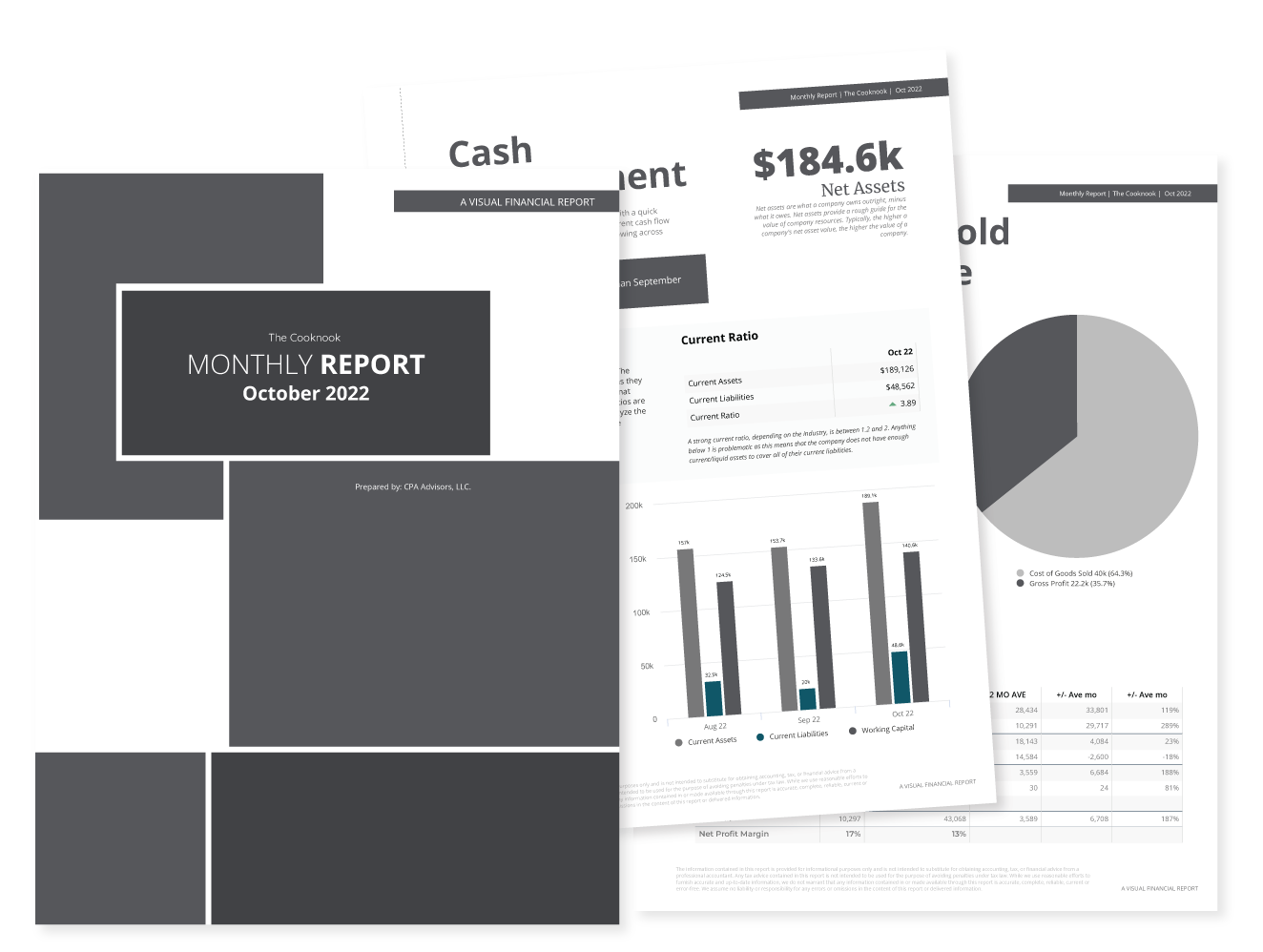CPAs and Visual Psychology.
You are left-brained, most of your clients are not.
I bet you are wondering why, as a CPA, you need to know anything about psychology and how the brain works and behaves. You may be thinking, “I work in financial data and numbers for a reason. Please don’t talk to me about this.” If your goal as a financial advisor is to advise and educate your clients honestly, you need to have at least a basic understanding of how our brains interpret, collect, and retain information. It will come back to you ten-fold when you realize HOW you present the information is as important as the information itself.
A quick lesson on the extraordinary human brain and it’s abilities:
- Colored visuals increase people’s desire to read content by 80%.
- Content with images increases the view rate by 94%.
- Our brains can see images that last only 13 milliseconds.
- 90% of information transmitted to the brain is visual.
- The human eye can process 36,000 visual messages in an hour.
This data is precisely why you should care about applying visual content to your financial reporting. The first two facts alone are reason enough to use visuals! Your reports have a much higher chance of actually being read. Words don’t always paint the most clear-cut picture, and raw financial data doesn’t tell the most exciting story. When you add visuals, it enhances the data and gets your message to your clients more effectively.
Let Them See Your Work.
Focus on Keeping Your Client’s EYE on the prize.
As we mentioned above, the human eye is like nothing else in its ability to process information. Keeping in mind how eyes communicate with the brain is the key to creating and using visual aids in financial reporting. When it comes to analyzing data, let the brain and eyes do all the work! Presenting financial data visually makes it most comfortable for your client’s mind to understand. Your client’s proper understanding of their books is the PRIZE! It is what you desire for your clients and what they desperately want too.
Tell a Financial Story
Make it easy on the EYES (and the brain).
Financial advisors have a lot of knowledge about their client’s financial data. Because of this, it can be easy to want to give them all of it at once.
It is essential when creating visual aids to do the following:
- Plan to include with the financial report.
- Do not provide ALL the possible financial data.
- Don’t cram it all into one graph, chart, or infographic.
- Keep it concise; include only the relevant data.
If you create a bubble chart filled with so many bubbles, it looks like a flute of champagne, you have made it too difficult for anyone to follow.
Overcomplicating the data will only confuse your audience. So double-check and make sure it is easy to follow and only includes relevant information.
Fortunately for us, there are some incredibly smart psychologists out there who can help! Understanding the Gestalt Principles is a great place to start if you want to learn more about presenting the information. It is helpful because it breaks down the best way possible to ensure your clients’ understanding. These principles help clarify how the eyes and brain work together in analyzing data.
Behind the Visual Reporting Curtain
For your EYES only.
Always know your audience. Is this report going to the CEO’s inbox, a manager, or a small business owner? Depending on the answer, you will need to adjust the information included in your reports, along with how you are presenting it.
As a trusted financial advisor, you should already know your clients’ level of accounting understanding. This knowledge will be your guide to know what to include and how to include it.
Let me know when more articles are posted.

By Marcus Honesta.
A Picture is Worth…
Details to catch your client’s EYE.
Now that you have defined who your audience consists of, what financial data do you want them to comprehend? Keep in mind, different professions require different information to do their job and make well-informed decisions. Knowing their needs will help you choose the correct chart, diagram, etc. to convey your point effectively. Because of this, selecting the wrong visual aid or defaulting to the most common chart or graph is a sure-fire way to confuse your client or, worse, lead to an error in data interpretation. Choose wisely.
How do you build a visual report?
We have you covered.
Visual Financial Reporting combines psychology with critical data science. Does the idea of creating something visual from scratch sound exciting or terrifying to you?
If you are terrified and are thinking this sounds far too right-brained, don’t stress! Thanks to technology and our team at Reach Reporting, the work has already been done for you! You can enjoy the spoils of beautiful visual reports that come to life with your financial data. We know you are busy so we have created our system with you in mind.
Learn how to build a visual report.
In conclusion, at the most basic level, data visualization is simply the visual presentation of financial data. Visualization aims to communicate the data clearly, concisely, and effectively to your clients. By understanding how the eyes and the brain interpret data, you have an immediate leg up on your competition.
Add Reach Reporting to your tool-set, and you will become a valuable, irreplaceable asset to your clients.
The human mind is incredibly receptive to visual information. That’s why data visualization is a powerful tool for communication and why Reach Reporting is THE best solution on the market.


